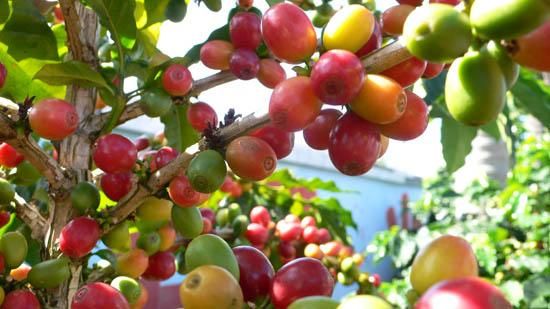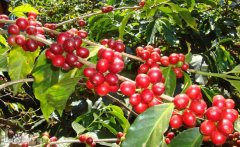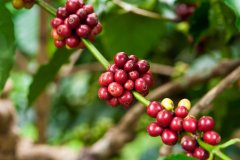Lim Coffee is grown in Africa
In recent years, coffee producing countries no longer blindly pursue high output while neglecting quality. Many countries have begun to introduce a new coffee evaluation system in order to arouse the enthusiasm of producers and promote the production of fine coffee. For example, Brazil began to implement the Cup of excellence coffee rating system in 1999 in order to better subdivide boutique coffee. And boutique coffee has become one of the fastest growing markets in the catering service industry, reaching 12.5 billion US dollars in the United States alone in 2007. All these can see the potential of the boutique coffee market, and the boutique coffee market will certainly grow stronger and stronger in the future.

Limu grows in the southern western highlands of Ethiopia (the border between Shewa and Sidmo provinces) east of Jima and north of West Dharma. it is preferred by most Europeans and Americans at an altitude of 3600-6200 feet. Its annual output is about 110000bags/60kg, and most of the beans are round (15/16scr). It is bluish in color and bluish in color, and the export is mostly G2 grade. It tastes like Yegashev, but its viscosity is thin. But the flower and fruit taste is obvious, the sour taste is softer than Yegashev, the more irritating acid, the aftertaste is similar to the wine, has a very good and balanced quality, this is more suitable for air flow medium baking, not suitable for deep baking, the better flavor after baking is two to three days. It is the only boutique coffee producing area in the west wall, with less output, mainly exported to European and American markets, and rare in Asia. There are three kinds of treatment: water washing, sun washing and semi-washing. For Europe and the United States, the ranking of water-washed Lim is second only to Yega Schiffe. The taste spectrum of Lim is different from that of Sidamo and Yega Schiffe, the consistency is obviously lower, and the performance of flower aroma and citrus acid is also lower than that of Yega and Cedamo, but there is a smell of grass and black sugar, and the fruit acid is bright.
Important Notice :
前街咖啡 FrontStreet Coffee has moved to new addredd:
FrontStreet Coffee Address: 315,Donghua East Road,GuangZhou
Tel:020 38364473
- Prev

Sour coffee at Harald African Coffee Manor
Harald (Harar) is located in the Eastern Highlands of Ethiopia (Harerge province) and grows between 5000 and 7000 feet above sea level. Most of the raw beans are medium size and long at both ends, with yellow or golden green color, strong chocolate smell when baking, wild taste with moderate acidity and rich texture, is a very typical mocha flavor, good Hara with
- Next

Gima Coffee Farm famous Coffee Farm
Boutique coffee has a rich and beautiful taste. Even if the coffee made of boutique coffee beans is not all fine coffee, it depends on whether it gives full play to the characteristics of coffee beans, whether it has a good taste, if not, it can not be called boutique coffee. Djimmah accounts for about 50% of Ethiopia's annual output (1000000bags/60kg).
Related
- Does Rose Summer choose Blue, Green or Red? Detailed explanation of Rose Summer Coffee plots and Classification in Panamanian Jade Manor
- What is the difference between the origin, producing area, processing plant, cooperative and manor of coffee beans?
- How fine does the espresso powder fit? how to grind the espresso?
- Sca coffee roasting degree color card coffee roasting degree 8 roasting color values what do you mean?
- The practice of lattes: how to make lattes at home
- Introduction to Indonesian Fine Coffee beans-- Java Coffee producing area of Indonesian Arabica Coffee
- How much will the flavor of light and medium roasted rose summer be expressed? What baking level is rose summer suitable for?
- Introduction to the characteristics of washing, sun-drying or wet-planing coffee commonly used in Mantenin, Indonesia
- Price characteristics of Arabica Coffee Bean Starbucks introduction to Manning Coffee Bean Taste producing area Variety Manor
- What is the authentic Yega flavor? What are the flavor characteristics of the really excellent Yejasuffi coffee beans?

